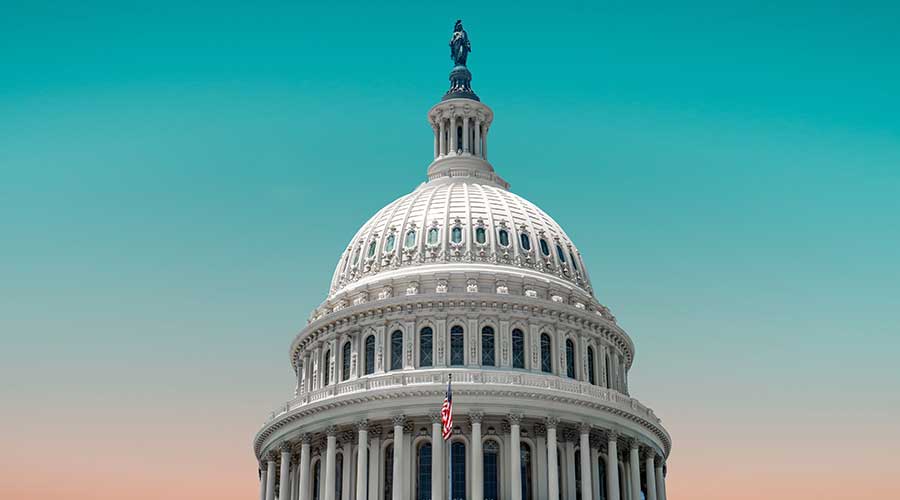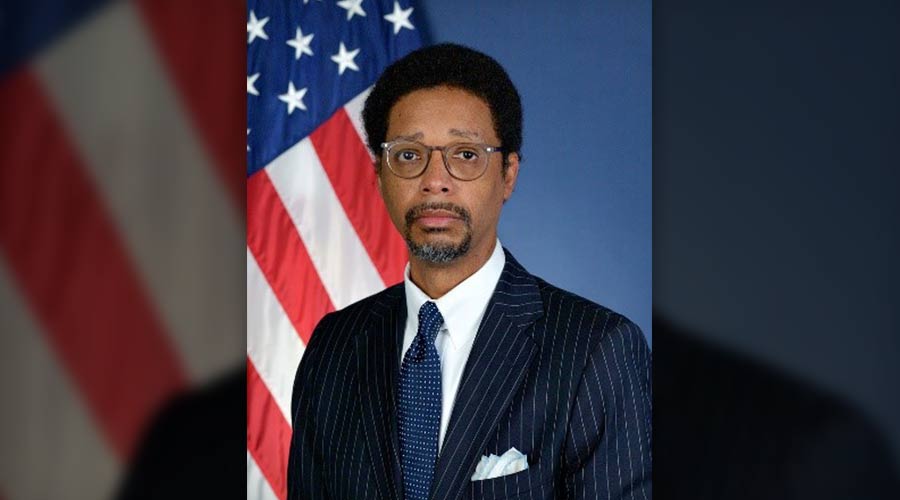Stay updated on news, articles and information for the rail industry
June 2012
Rail News: Federal Legislation & Regulation
Alaska Railroad passenger operations in jeopardy as company braces for a potential loss of significant federal funds
By Julie Sneider, assistant editor
Editor's note: Congress passed the surface transportation bill on June 29, two weeks after this story was posted. How did Alaska Railroad Corp. fare in the final bill? Better. Here's the update.
While all rail transit operators are anxious for Congress to act on a long-term surface transportation bill, perhaps no railroad executive is sitting on pins and needles more than Alaska Railroad Corp. (ARRC) President and Chief Executive Officer Christopher Aadnesen.
Since May 8, the House and Senate Transportation Conference Committee has been negotiating a compromise of a multi-modal surface transportation bill that transit agency officials hope will provide a stable, predictable source of funding over the next few years. The committee, which includes Rep. Don Young (R-Alaska), is hashing out the details between the Senate’s two-year transportation bill known as MAP-21 passed earlier this year, and House Republicans who want a longer-term bill that reforms the way the federal government pays for surface transportation programs and infrastructure.
In the case of ARRC, the outcome could determine whether the railroad is able to continue operating passenger-rail service, ARRC officials say. ARRC is a full-service freight and passenger rail service that links ports and communities to the state’s major metropolitan areas such as Anchorage, Fairbanks and other locations in south-central and interior Alaska.
If the Senate’s version of the transportation legislation becomes law, ARRC stands to lose a majority of the federal dollars it relies on annually to pay for critical infrastructure maintenance and improvements, according to Aadnesen.
The dollars in question are the railroad’s Federal Transit Administration (FTA) formula funds for providing regular public transportation services throughout the state’s regions. For many Alaskan residents, especially those who live in areas without access to roads, the ARRC is their primary vehicle for getting to work, shops and other important locations.
Under the Senate bill, ARRC would lose $25 million to $30 million of the $36 million it typically receives in FTA formula funds annually. If the Senate version becomes law, the loss of funds would have a huge impact on the railroad’s ability to provide passenger service, maintain existing and invest in new equipment and infrastructure, and make its annual $16 million in debt payments.
Aadnesen believes ARRC is being “singled out” by the Senate legislation, which would determine much of the railroad’s FTA formula funds, as a special interest “earmark.” Aadnesen cites politics as the likely reason for the measure.
In 2000, the FTA determined that ARRC was eligible to receive FTA funds because it met the federal definition of a public transportation provider. At that time, however, the FTA accepted only 10 percent of ARRC’s track miles as qualifying for the funding. ARRC officials believed then and believe now that the railroad’s entire network, which connects Alaskan communities from Seward to Fairbanks, should be counted toward the funding formula. By the time the federal SAFETEA-LU Act of 2005 was passed, the state’s congressional delegation was able to convince other lawmakers to accept a compromise that would allow 60 percent of ARRC tracks to qualify, leading to its current annual funding level of $36 million.
There are lawmakers who remain in Congress today who did not support that original compromise and “still hold a grudge” against ARRC receiving those federal dollars, Aadnesen says. As a result, the Senate’s version of the legislation would define much of ARRC’s funding as an earmark, making ARRC ineligible to receive it.
Alaska’s funds wouldn’t go toward reducing the federal deficit; they would be distributed to other transit agencies, Aadnesen notes. Also, the railroad isn't seeking a special interest provision — it's a public transportation agency seeking equitable treatment under the funding formula, he adds.
A loss of $25 million to $30 million in federal funds would be devastating to ARRC, which is “fairly fragile railroad from a financial standpoint,” he says.
The funding makes up an essential part of the road’s business model: About $16 million of the money is used to repay bonds sold in 2006-2007 to fund an accelerated track rehabilitation program. The dollars also help to cover other important capital improvements such as bridge rehabilitation and replacement, building modernization, rail-car purchases and information technology upgrades, according to ARRC’s website.
While the Transportation Conference Committee’s deliberations continue, ARRC’s executives, labor union representatives, employees, business partners and other stakeholders have been calling on Young, the state’s only House representative, and Sens. Lisa Murkowski (R-Alaska) and Mark Begich (D-Alaska) to make them aware of the railroad’s situation, Aadnesen says.
“We do know that some of the key players on the Conference Committee and in the Senate are aware of our issue and are considering it,” he says. “We’ll have to see where the process takes us.”
But as they wait for the political process to play out, ARRC’s leadership has been preparing for the potential loss of significant federal revenue by slashing the railroad’s capital budget, trimming $5.5 million from operations and cutting summer hiring.
“Because we were unsure about our funding, we’ve had to cancel about half of our capital program for this year,” which initially was budgeted at $40 million, Aadnesen says. “We cut back on our track rehabilitation [plans], our positive train control (PTC) and a variety of other things we normally would have been doing this summer.”
The railroad eliminated about 50 jobs through attrition and by not hiring workers to fill summer positions. More position cuts could be on the way, depending on the agency’s financial picture under the new surface transportation legislation.
Also a concern to Aadnesen is the railroad’s ability to make its $16 million in annual debt payments; about $137 million in bond debt remains to be paid. The bonds are guaranteed by the continuing flow of the federal formula funds, so if the ARRC loses that funding source, it may have to default on its loan if it can’t find an alternative revenue source.
Aadnesen also questions the impact the funding loss would have on the railroad’s ability to comply with the PTC mandate.
“Without positive train control, we can’t operate passenger service, and we have a national treasure up here in that our passenger service is iconic and known by most people in the United States,” he says. “But without federal funds, we can’t see moving forward with PTC implementation.”
In the meantime, Aadnesen and other ARRC officials have drafted two plans to address the potential funding situation. The first is a temporary plan that “allows us to get our foot in the door on cost savings,” Aadnesen says.
“And included with that is an all-out effort to influence the Conference Committee and key players that we ought to be part of the law and not omitted from it,” he adds. “And that involves our shippers, our other stakeholders, the governor, our Alaska delegation, the labor unions, our employees. The second phase, should we lose the money, is that we have a plan to go forward to completely restructure the railroad and change our service offerings to get us to a point where we can at least break even and stay solvent.”
Aadnesen declined to disclose what that second phase might entail until more is known about the legislation’s final outcome.
The Conference Committee is facing a deadline of June 30, which is when the latest extension of the SAFETEA-LU law is set to expire. If the committee can’t agree on a long-term bill, Congress would be faced with passing what would be the 10th extension of SAFETEA-LU, which originally expired in 2009.


 2025 MOW Spending Report: Passenger-rail programs
2025 MOW Spending Report: Passenger-rail programs
 Gardner steps down as Amtrak CEO
Gardner steps down as Amtrak CEO
 Guest comment: Oliver Wyman’s David Hunt
Guest comment: Oliver Wyman’s David Hunt
 Women of Influence in Rail eBook
Women of Influence in Rail eBook
 railPrime
railPrime








